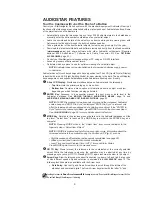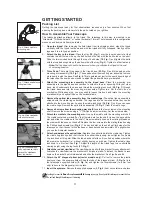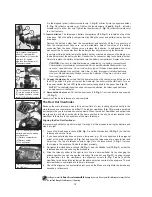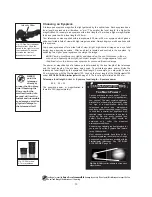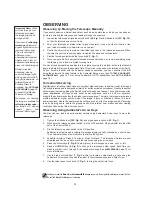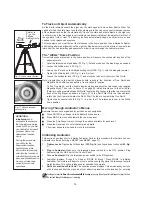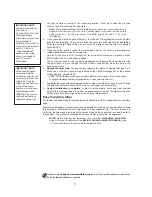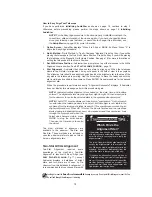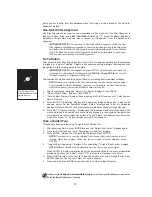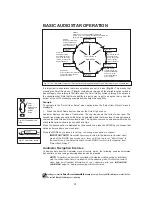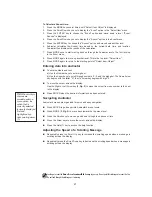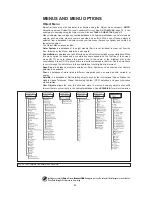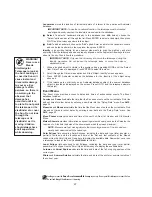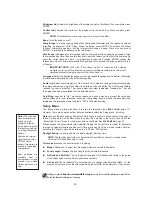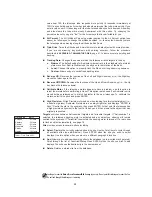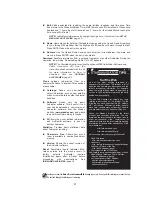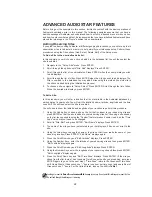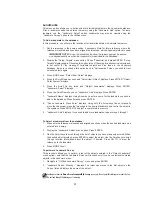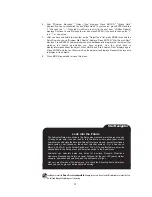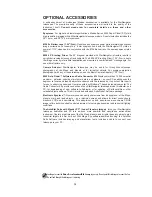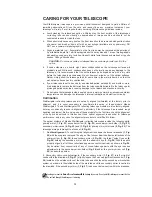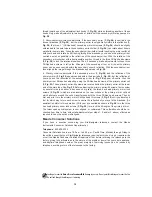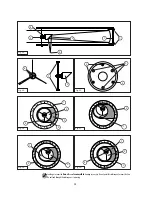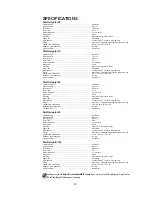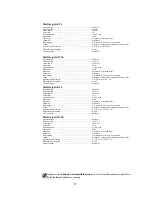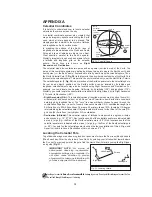
23
Landmarks stores the location of terrestrial points of interest in the permanent Audiostar
database.
IMPORTANT NOTE: To use the Landmark function, the telescope must be located
and aligned exactly as when the landmark was added to the database.
쏋
Select: To select a Landmark already in the database (see
ADD
below), choose the
"Select" option and scroll through the list. Press ENTER to select a Landmark, then press
GO TO and the telescope slews to the object.
쏋
Add: To add a Landmark, choose the "Add" option. Enter a name for the Landmark. Locate
and centre the Landmark in the eyepiece, then press ENTER.
Identify is an exciting feature for an observer who wants to scan the night sky and start
exploring. After the telescope has been properly aligned, use the Audiostar Arrow keys to move
about in the sky. Then follow this procedure:
IMPORTANT NOTE: Only use the Arrow keys to move the telescope during the
Identify procedure. Do not loosen the telescope locks or move the base or
alignment is lost.
1.
When a desired object is visible in the eyepiece, keep pressing MODE until the “Select
Item: Object” menu is displayed. Press ENTER to select this menu.
2.
Scroll through the Object menu options until the “Object: Identify” screen appears.
3.
Press ENTER. Audiostar searches the database for the identity of the object being
observed.
4.
If the telescope is not directly on an Audiostar database object, the nearest database
object is located and displayed on the screen. Press GO TO and the telescope slews to
that object.
Event Menu
The Event menu provides access to dates and times of astronomical events. The Event
database includes:
Sunrise and Sunset calculate the time that the Sun rises or sets on the current date. Find rise
and set times for other dates by entering a new date into the “Setup: Date” menu. See
DATE
,
page 25.
Moonrise and Moonset calculate the time that the Moon rises or sets on the current date. Find
rise and set times for other dates by entering a new date into the “Setup: Date” menu. See
DATE
, page 25.
Moon Phases displays the date and time of the next Full, New, 1st Quarter, and 3rd Quarter
Moon.
Meteor Showers provides information on upcoming meteor showers, such as the Perseids, the
Leonids,
etc. Also lists the dates of the showers and when they reach maximum.
NOTE: Meteors are fast moving objects that cover large areas of the sky and are
usually best observed with the naked eye.
Solar Eclipse lists upcoming Solar Eclipses, including the date and type (total, annular, or
partial) of eclipse, and the location and time of the first and last contacts of the Moon's
shadow. Use the Scroll Up and Down keys to display the available data. Remember, never use
a telescope to look at the Sun! See
WARNING!
to the left.
Lunar Eclipse lists upcoming Lunar Eclipses, including the date and type (total, partial,
penumbral) of eclipse. Use the Scroll Up and Down keys to display the available data.
Autumn and Vernal Equinox calculate the time and date of the fall or spring equinox of the
current year.
Winter and Summer Solstice calculate the time and date of the winter or summer solstice of
the current year.
WARNING!
Never use a
Meade
StarNavigator
Telescope to look at
the Sun! Looking at
or near the Sun will
cause instant and
irreversible damage
to your eye. Eye
damage is often
painless, so there is
no warning to the
observer that
damage has
occurred until it is
too late. Do not point
the telescope or its
viewfinder at or near
the Sun. Do not look
through the
telescope or its
viewfinder as it is
moving. Children
should always have
adult supervision
while observing.
Looking at or near the
Sun
will cause
irreversible
damage to your eye. Do not point this telescope at or near the Sun.
Do not look through the telescope as it is moving.

